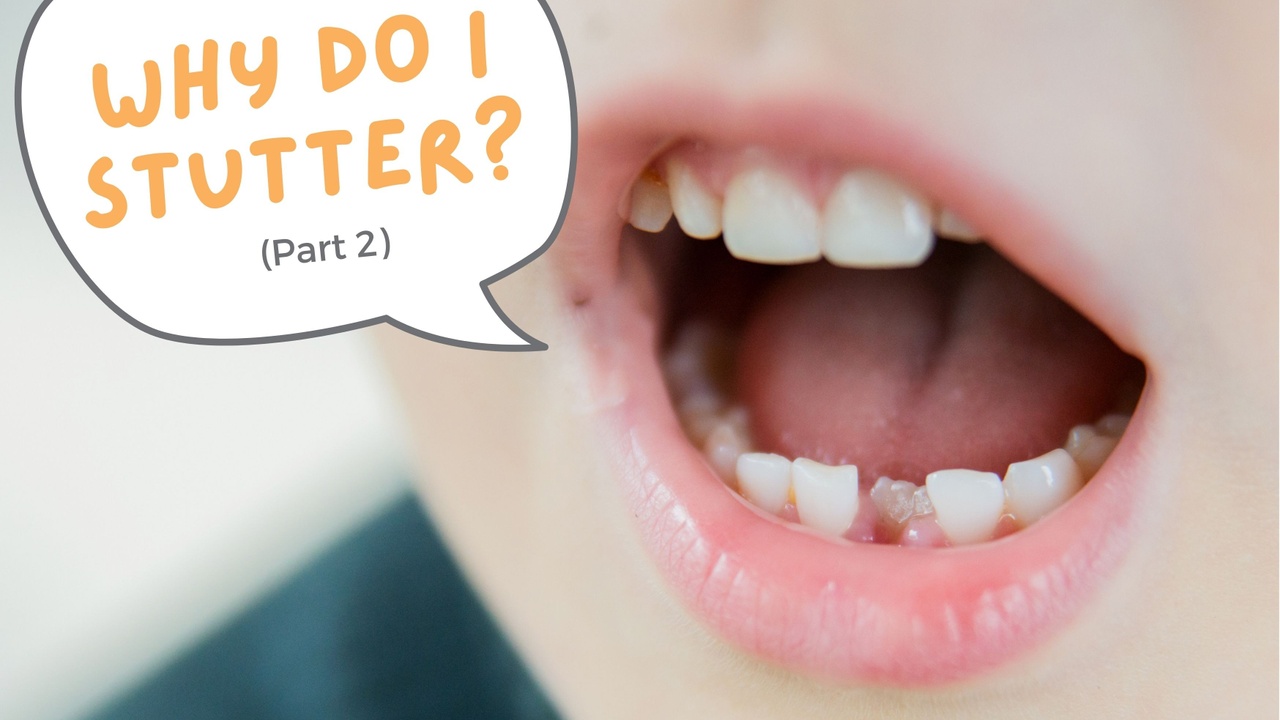Why Do I Stutter? (Part 2)
Oct 25, 2021
For people who stutter, stuttering will most likely develop between the ages of 2 and 6. However, some children will have typical disfluencies that they outgrow in less than 6 months that do not turn into atypical disfluencies. If your child stutters for more than 6 months they may need treatment from a speech-language pathologist. There are risk factors that may be a red flag that the child will not outgrow stuttering.
These possible risk factors include:
- Boys are found to be at a higher risk to not outgrow stuttering than girls.
- Having other people in the family who stutter.
- A child who continues to stutter after 6 or 12 months with no improvement.
- A child’s language develops slower or has a different speech and language impairment that is occurring at the same time.
We now know when stuttering usually develops. But you may now be wondering, what even causes stuttering? There is not one thing that is said to cause stuttering. Most importantly no one caused you or your child to necessarily stutter. However, environmental factors like where others may be making fun of them, finishing the child’s thoughts, interrupting the child when they are speaking, negative thoughts about speaking ability, anxiety, etc, can play a role in having disfluencies more likely to occur. How a child reacts (sensitivity) and can cope with those environmental factors during a stuttering event influences the psychological part of stuttering (see blog post about “What is Stuttering? (part 1). Both genetics and brain differences may cause stuttering.
Genetics: Research shows that there may be gene mutations that are tied to stuttering. Simply, these gene mutations cause an enzyme signal to be disrupted on the way to its cell.
Brain and brain wiring differences:
- Nerve cells and their connections to each other on the right side versus the left side of the brain.
- Connectivity throughout the brain in relation to speech motor control.
- Decreased blood flow to certain speech and language areas of the brain.
- Processing language.
- Memory in relation to speech sounds.
References:
American Speech and Hearing Association. Stuttering.
https://www.asha.org/public/speech/disorders/stuttering/
American Speech and Hearing Association. Fluency Disorders
https://www.asha.org/practice-portal/clinical-topics/fluency-disorders/
Speech and Language Therapy
Individual therapy is provided in our home-based office setting and is one-on-one with a certified speech-language pathologist. We always invite families and caregivers to be active members of the team and therapy sessions. We specialize in working with children and their families (siblings included!) to address communication challenges in the following areas:
- Articulation Disorders
- Phonological Delays/Disorders
- Childhood Apraxia of Speech
- Late-Talkers & Developmental Delays
- Receptive Language Disorders
- Expressive Language Disorders
Contact us to learn more!
Tel: 208-981-1111
Email: [email protected]
Here are some resources that are available from our store! (For Clinicians)
Like us on Facebook,
Tandy Therapy LLC: https://www.facebook.com/TandyTherapyLLC
Tandy Therapy Box LLC: https://www.facebook.com/tandytherapybox
Follow us on Instagram: @tandytherapy
About the Author
Lauren Purcell is a Speech-Language Pathologist (SLP). She graduated from San Jose State University in California with a Bachelor of Arts in Communicative Disorders and Sciences and a Master of Arts in Education/Speech Pathology. She works as an SLP with Tandy Therapy. Tandy Therapy LLC is a multi-disciplinary clinic that offers speech-language, occupational, and physical intervention to pediatric clients at their home office in Post Falls, ID, as well as via telepractice around the country. You may call the team at 208-981-1111 to set up a strengths-based evaluation if you feel that language learning and understanding may be affecting your child’s school work.

